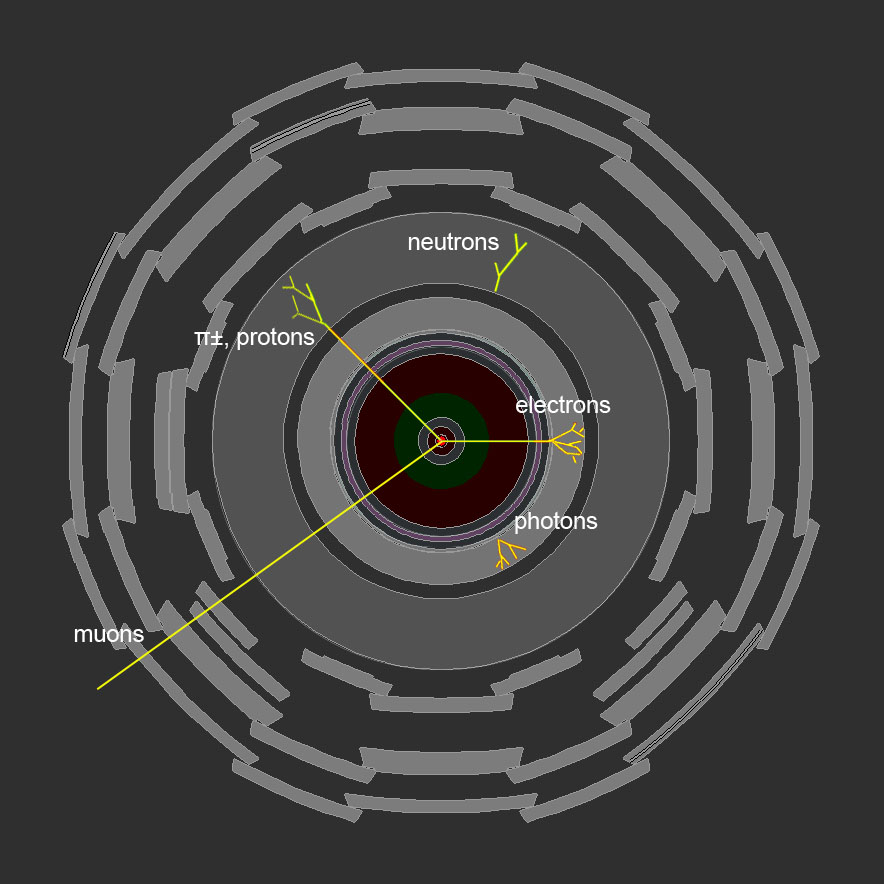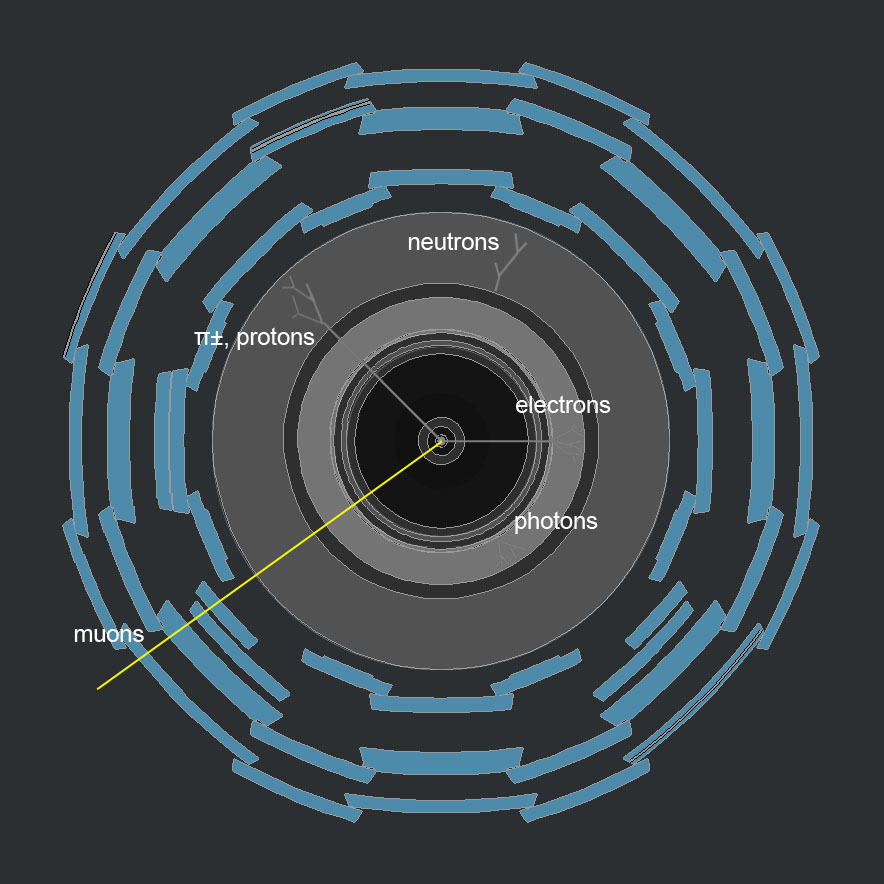|
|
BASICS FOR SIMPLIFIED HYPATIA
Throughout the project you will be looking at different "events" which take place when there is a proton-proton collision. The events which you will be looking at, are the result of simulations where one of the products of the proton-proton collision was a Z* particle. The Z is a very short lived particle and decays immediately. Sometimes it decays to a pair of electron-positron or to muon**- antimuon particles. The events which you will be looking at, contain only such decays but the decay products are not necessarily detected (because of not complete coverage of the detector, cracks etc). In general though, the electrons and muons interact with the detector and produce traces in different parts of the detector; these traces are called “tracks”. If they originate from the decay of the same particle, they should join together at the same point, called “vertex” (in your case, the production point of the Z particle). Each decay product leaves a different signature in the detector as will be explained below.
The ATLAS detector consists of several components, stacked so that all particles go through different layers sequentially. An example of different particles interacting in different layers, is shown in the following figure.
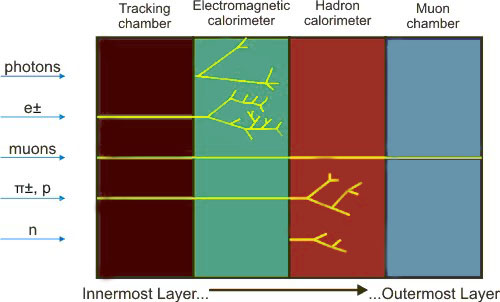 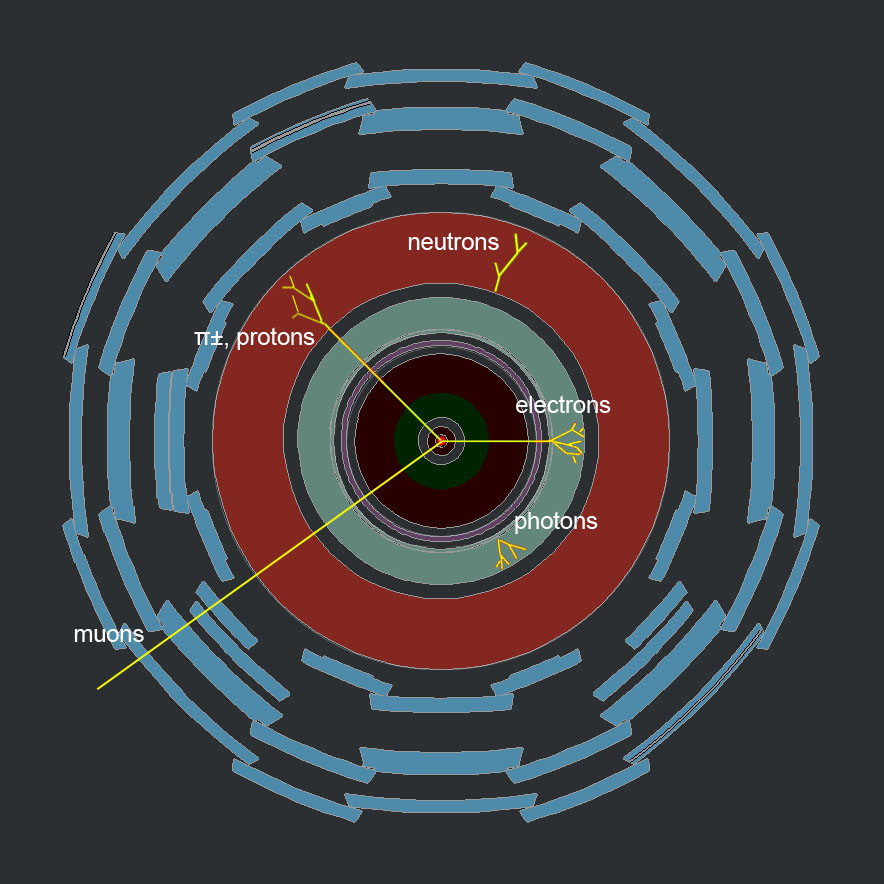
The layers are arranged concentrically, surrounding the region where the collisions take place.
Starting from the interaction point (the place where the protons collide with each other, or in other words, the centre of the circle) and going radially out, there are the following main components of ATLAS:
- Tracker (or Inner Detector, the brown and green inner circles): The innermost component of ATLAS, consists of three different subdetectors, all aiming at the detection of charged particles. The neutral particles (e.g. photons) traverse the tracking detectors undetected. All charged particles interact with the tracker but come out of it with in principle the same energy and direction they had before entering it.
|
|
| |
|
-
Calorimeters: When a particle (both charged and neutral) enters a calorimeter it collides with the dense material in the detector. The collisions give rise to a shower of secondary particles and the energy of the original particle, in most cases, is absorbed in the calorimeter. Because of this, the calorimeters are located outside the tracker so that the trajectory of the charged particles gets registered before they are absorbed in the calorimeter. The calorimeters measure energy.The ATLAS calorimeters consist of two different parts:
- The electromagnetic calorimeter (grey/green): measures the total energy of e+, e-, and photons. Thus, the electrons which you are will be looking for, should stop at these calorimeters.
- The hadronic calorimeter (red): measures the total energy of hadrons (such as protons, neutrons).
Only muons (and neutrinos) have the ability to penetrate first the tracker and then the calorimeters and continue to the muon detectors. |
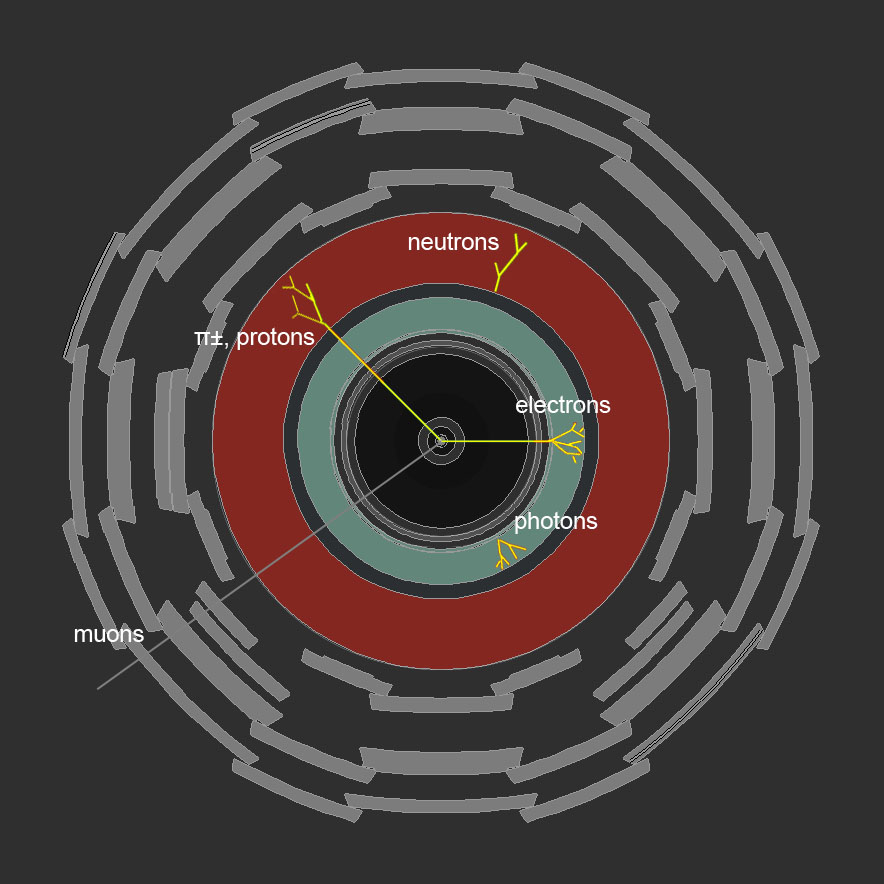
Only muons (and neutrinos) have the ability to penetrate first the tracker and then the calorimeters and continue to the muon detectors |
| |
|
- Muon spectrometer/detectors: They are the outermost component (blue). The muons are the only charged particles which pass the hadronic calorimeter almost unaffected and reach the muon detectors. They are detected as tracks in the different layers of muon detectors. So the muons you will be looking for, should have reached the muon detectors.
|
|
| |
|
- Missing energy/momentum: The amount of momentum and energy needed for balance and conservation of energy and momentum. In LHC, the initial momentum of the colliding constituents along the beam axis is not known (because the energy of each hadron is split, and constantly exchanged, between its constituents), so the amount of missing energy cannot be determined. However, the initial energy and momentum transverse to the beam axis is zero, so any net momentum indicates missing transverse momentum/energy (Etmiss). It is displayed in the end-view as a dashed line which shows the direction of the missing transverse momentum.
- Magnets: The ATLAS detector is in a strong magnetic field which bends the tracks of the charged particles. The fields are created by four different magnets: three toroidal and one solenoid (not shown in the event display). Positive and negative particles curve in opposite directions in the same magnetic field. The radius of curvature and the direction of the particles are used to determine the particle’s momentum and charge.
|
| |
|
AIM OF THE EXERCISE:
There follow some event displays from the ATLAS detector, which show some of the possible decays of a Z particle. (The Z itself cannot be seen because it decays in too short a time to be seen.) Try to identify the particles that left these tracks. Recognize the decay mode of each Z and measure the relative probability of each decay.
If you need help, go back to the “Simplified Basics” or go back to the “Links” page. |
*The Z particle is one of the mediators of the weak nuclear interaction. It is heavy- its mass being about 91 times the mass of the proton-neutral and unstable namely decays to other particles immediately.
**The muon is, compared to the electron, a heavy (106 MeV) negatively charged lepton (i.e. a matter particle). It is unstable and therefore it decays into other particles. Its mean lifetime is 2.2 µs.
|


